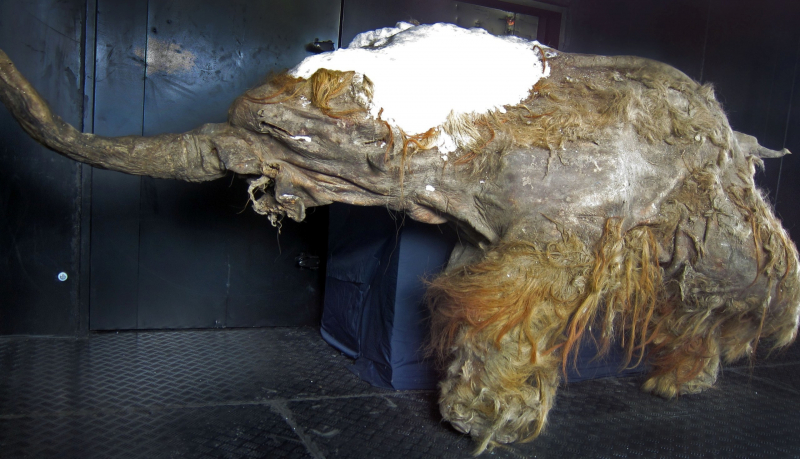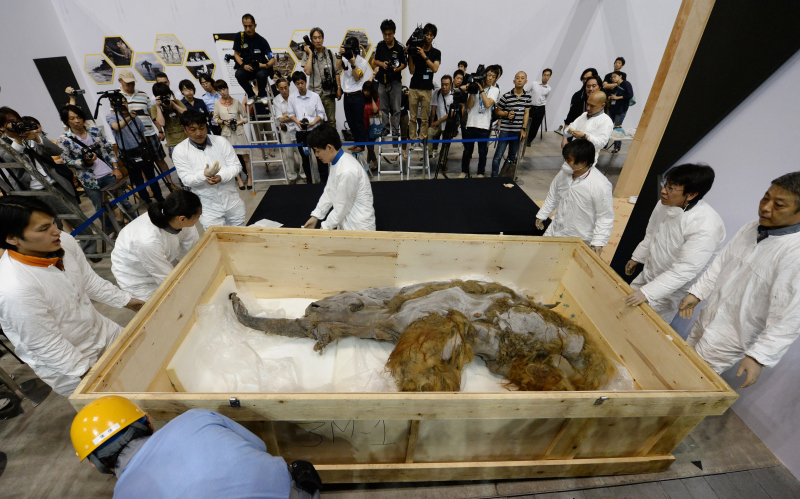Yuka the Mammoth

Ice has been amazing at preserving not just plant life and viruses, but also animals. There is, at the moment, a strong movement among scientists to use remnants found frozen in ice to bring back extinct creatures, and the one that’s attracting the most interest is none other than the woolly mammoth.
Mammoths only became extinct a few thousand years ago and, since then, they have recovered quite a few fossils that had been frozen in ice. The title of “best-preserved mammoth” goes to Yuka, a baby that was recovered by Siberian hunters back in 2010. Although first estimated to be 39,000 years old, the age was reduced down a touch to 28,000 following more tests, but it’s the condition that scientists were interested in, not the age. Yuka had been murdered by ancient hunters who removed most of the internal organs and portions of the bones. They then left the rest of the carcass intact and apparently buried it to retrieve it later, but never did.
As Japanese scientists were able to harvest tissue samples from the muscles and bone marrow. More remarkable, they were subsequently able to implant cell nuclei from those samples into egg cells derived from mice, which then showed some type of biological activity. In other words, scientists reawakened 30,000-year-old mammoth cells. Although the activity was very faint, the Japanese researchers dubbed it a “significant step toward bringing mammoths back from the dead.”
Found: in 2010
Location: Siberia











